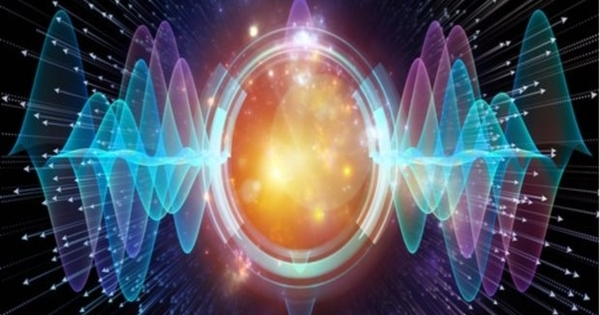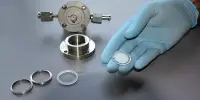Quantum sensing is a rapidly developing field that uses the principles of quantum mechanics to measure physical quantities such as magnetic fields with unprecedented accuracy. Recently, a new quantum sensing technique has been developed that can reveal the magnetic connections between two distant objects.
A team of researchers supported by the Q-NEXT quantum research center demonstrates a novel way to use quantum sensors to uncover relationships between microscopic magnetic fields. Assume your patio and kitchen thermometers both show a sudden drop in temperature. You initially believe it is due to a cold spell and turn up the heat in your home. Then you realize that, while it has gotten colder outside, someone has left the refrigerator door open inside.
You initially assumed the temperature drops were related. You later discovered that they weren’t. Recognizing when readings are correlated is critical not only for your home heating bill, but for science as a whole. It’s especially difficult when measuring atomic properties. Now scientists have developed a method, reported in Science, that enables them to see whether magnetic fields detected by a pair of atom-scale quantum sensors are correlated or not.
“As far as I know, this is something no one has attempted, which is why we see correlations where no one else has. You really benefit from that.” Shimon Kolkowitz from the University of Wisconsin-Madison
The research was funded in part by Q-NEXT, a National Quantum Information Science Research Center led by the Department of Energy’s Argonne National Laboratory. The ability to tell the difference between standalone and correlated environments at the atomic level could have huge implications in medicine, navigation, and discovery science.
There wasn’t really a good way to do that with these NV centers if you wanted to learn not just the value of the magnetic field at one location or at one point in time, but whether there’s a relationship between the magnetic field at one location and the magnetic field at another nearby.
Shimon Kolkowitz
What happened
A team of Princeton University and University of Wisconsin-Madison scientists developed and demonstrated a new technique for determining whether magnetic fields detected by multiple quantum sensors are correlated or independent.
The team concentrated on a type of diamond-based sensor known as a nitrogen-vacancy center, or NV center, which consists of a nitrogen atom next to an atom-sized hole in the diamond crystal of carbon atoms.
Scientists typically measure magnetic field strength at a single NV center by averaging multiple readings. Alternatively, they could take an average reading from a large number of NV centers all at once. While helpful, average values provide only so much information. Knowing that the average temperature in Wisconsin will be 42 degrees Fahrenheit tomorrow tells you little about how much colder it will be at night or in the northern part of the state.
“There wasn’t really a good way to do that with these NV centers if you wanted to learn not just the value of the magnetic field at one location or at one point in time, but whether there’s a relationship between the magnetic field at one location and the magnetic field at another nearby,” said paper co-author Shimon Kolkowitz, associate professor at the University of Wisconsin-Madison and Q-NEXT collaborator.
The new method developed by the team employs multiple simultaneous readings from two NV centers. They obtained information about the relationship between the magnetic fields at both points using sophisticated computation and signal-processing techniques and could determine whether the two readings came from the same source.
“Were they seeing the same magnetic field? Were they seeing a different magnetic field? That’s what we can get from these measurements,” Kolkowitz said. “It’s useful information that no one had access to before. We can tell the difference between the global field that both sensors were seeing and those that were local.”

Why it matters
Quantum sensors harness the quantum properties of atoms or atom-like systems to pick up tiny signals- such as the magnetic fields arising from the motion of single electrons. These fields are puny: 100,000 times weaker than that of a fridge magnet. Only ultrasensitive tools such as quantum sensors can make measurements at nature’s smallest scales.
Quantum sensors are anticipated to be extremely powerful. NV centers, for example, can distinguish features separated by one ten thousandth of a human hair. With that kind of hyperzoom capability, NV centers could be placed inside living cells to get a close-up look at how they work. Scientists could even use them to pinpoint disease causes.
“What distinguishes NVs is their spatial resolution,” Kolkowitz explained. “That’s useful for imaging magnetic fields emitted by exotic materials or examining the structure of individual proteins.”
Scientists may one day be able to map atom-level changes in magnetism through time and space using the Kolkowitz team’s new method for sensing magnetic field strengths at multiple points at the same time.
How it works
How did the team make these informative measurements? They got granular. Comparing the covariance-calculated figures — which capture more detail than a couple of raw averages — let them see whether the fields were correlated.
“We’re doing that averaging differently than what’s been done in the past, so we don’t lose this information in the process of averaging,” Kolkowitz said ?”That’s part of what’s special here.”
So why hasn’t covariance magnetometry, as the method is called, been tested before now?
For one thing, the team had to create an experimental setup that would allow them to take measurements at multiple NV centers at the same time. The Princeton team, led by Professor Nathalie de Leon, built this microscope as part of the Co-Design Center for Quantum Advantage, another DOE National Quantum Information Science Research Center led by Brookhaven National Laboratory.
For another thing, covariance magnetometry only works when the individual measurements of these tiny magnetic fields are extremely accurate. (A readout is only as good as the measurements it relies on.) As a result, the researchers used a technique known as spin-to-charge conversion, which generates a raw reading with more information about the magnetic field for each measurement than other commonly used tools.
Individual measurements take longer when using spin-to-charge conversion. That is the price scientists pay for greater dependability. When combined with covariance to measure minuscule, correlated magnetic fields, it saves a significant amount of time. Researchers can gain access to atomic and subatomic details they didn’t have before by combining covariance information with spin-to-charge conversion, supercharging quantum sensing’s already powerful capabilities.
















